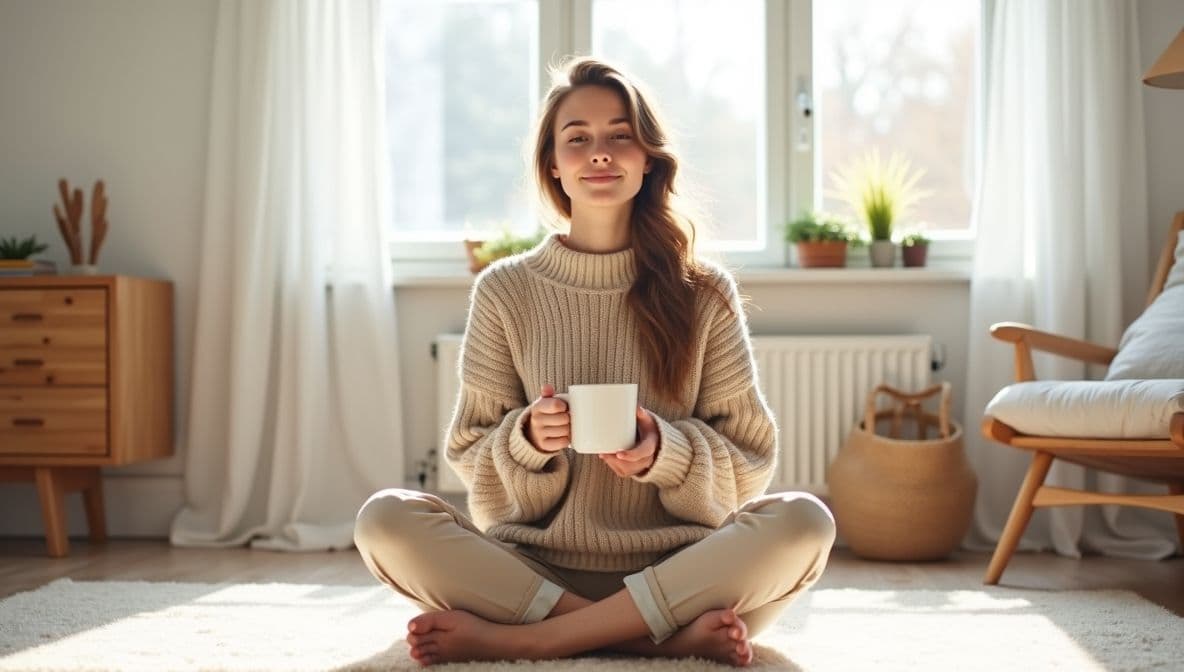Minimalist Lifestyle: Your Simple Guide to Living with Less (and Loving It!)

Ever feel like you're drowning in stuff? Your closet's bursting, your counters are cluttered, and you can't remember the last time you actually used half the things you own?
Welcome to minimalism—your ticket to breathing room, both literally and mentally.
What is a Minimalist Lifestyle, Really?
Let's clear this up: minimalism isn't about living like a monk or owning exactly 33 items. It's about keeping what adds value to your life and ditching the rest.
Think of it as Marie Kondo meets common sense. If it doesn't serve a purpose or make you happy, why is it taking up space in your home (and your head)?
Minimalist living means:
- Owning things intentionally, not accidentally
- Having a clutter-free, calm environment
- Spending money on experiences, not impulse buys
- Actually knowing what's in your closet
Why Go Minimalist? The Benefits You'll Actually Feel
1. Your Mind Gets Quieter
Clutter isn't just messy—it's mentally exhausting. A minimalist home means less visual noise, which translates to better focus, less anxiety, and actually being able to relax at home.
2. Your Wallet Gets Fatter
When you stop buying things you don't need, money starts piling up. Plus, less stuff = smaller living space = lower rent. It's not rocket science, but it works.
3. You Get Your Time Back
Fewer possessions mean less time cleaning, organizing, and searching for things. Imagine having an extra hour each day—that's the minimalist promise.
4. Decision Fatigue Disappears
Picking an outfit from 10 items? Easy. From 100? Exhausting. Minimalism cuts down daily decisions so you can save mental energy for things that matter.
How to Start Your Minimalist Journey (Without Freaking Out)
Step 1: Pick One Tiny Space
Don't try to minimalize your entire life on Saturday. Start with:
- Your junk drawer
- The bathroom cabinet
- Your car
- One shelf
Quick win = motivation boost.
Step 2: The Keep-Donate-Trash Method
Grab three boxes and sort everything:
- Keep: You use it regularly or genuinely love it
- Donate/Sell: It's fine, just not for you
- Trash: Broken, expired, or beyond help
Step 3: Ask the Magic Question
For every item: "Have I used this in the last 3 months?"
If not, and it's not seasonal or sentimental, it's probably goodbye time.
Step 4: One In, One Out
This is your new rule: buy something new? Remove something old. This single habit keeps clutter from creeping back.

Room-by-Room Minimalist Makeover
Bedroom: Your Sleep Sanctuary
- Clear nightstands (just a lamp and book)
- Minimal wall décor
- Quality bedding over quantity
- Clothes that fit in your closet (if it doesn't fit, something's gotta go)
Closet: The Capsule Wardrobe
Aim for 30-40 versatile pieces per season:
- Neutral colors that mix easily
- Quality basics that last
- If you haven't worn it in a year, donate it
Pro tip: Hang everything backward. After you wear something, hang it forward. After 3 months, donate everything still backward.

Kitchen: Clear Counters = Clear Mind
- Keep only what you use weekly
- One set of dishes (plus a few extras for guests)
- Countertops should be mostly empty
- If an appliance lives in a cabinet, you probably don't need it

Digital Life: Yes, This Counts Too!
- Unsubscribe ruthlessly from emails
- Delete apps you haven't used in a month
- Clean desktop and downloads folder
- Limit yourself to 2 social media platforms

The Minimalist Mindset: Think Different
Quality Over Quantity
One amazing winter coat beats five mediocre ones. Always.
Experiences Over Things
That concert memory? Priceless. That decorative bowl from 2019? Forgettable.
Contentment Over Comparison
Instagram makes everyone else's life look perfect. Minimalism teaches you to love what you have.
Common Minimalist Roadblocks (and How to Smash Them)
"But what if I need it someday?"
Someday rarely comes. And if it does? You can probably borrow it or buy it for less than you think.
"It was expensive!"
The money's already spent. Keeping something you don't use won't get it back. Cut your losses.
"It's sentimental..."
Keep a small memory box for truly special items. Take photos of the rest. You're keeping the memory, not the clutter.
"My family won't cooperate."
Start with your own stuff. Lead by example. You'd be surprised how contagious minimalism can be.
Beyond Stuff: Minimalize Your Life
Once you've tackled physical clutter, go deeper:
Your Schedule
- Say no to obligations that drain you
- Protect blank space on your calendar
- Choose depth over breadth in commitments
Your Relationships
- Invest in a few deep friendships
- It's okay to let toxic relationships go
- Quality over quantity applies here too
Your Goals
- Focus on 1-3 major goals, not 10
- Finish what you start
- Deep progress beats scattered effort
Your Information Diet
- Unfollow accounts that make you feel bad
- Limit news scrolling
- Read books, not endless feeds

Your 30-Day Minimalist Challenge
Want to dive in? Try this:
Week 1: Declutter one small area daily (drawer, shelf, car)
Week 2: Tackle your closet—donate 20+ items
Week 3: Digitally declutter—unsubscribe from 50 emails, delete unused apps
Week 4: Create your maintenance system (one in, one out rule)
Is Minimalism Right for You?
You'll love minimalism if:
- You feel stressed by clutter
- You want more free time and money
- You're tired of cleaning and organizing
- You crave a calmer home environment
Minimalism might not be your thing if:
- Your collections genuinely bring joy
- You're already content with your lifestyle
- You need equipment for your hobbies (that's totally fine!)
The Bottom Line
A minimalist lifestyle isn't about having nothing—it's about making room for everything that matters.
Less clutter = more clarity.
Fewer possessions = more freedom.
Simpler life = happier you.
You don't need to purge everything you own or live in an all-white apartment. Start small. Clear one drawer today. Donate one bag this weekend.
The minimalist life you're craving? It starts with one small choice.
Ready to breathe easier? Start with one drawer today. Your future self will thank you.
Related Posts
 Leveling Up Life: How Gaming Builds Real-World Success
Leveling Up Life: How Gaming Builds Real-World SuccessOctober 28, 2025
 What Happens When You Treat Your Life Like a Gym Workout
What Happens When You Treat Your Life Like a Gym WorkoutOctober 28, 2025
 Why The Next Big Trend Isn’t Digital — It’s Human
Why The Next Big Trend Isn’t Digital — It’s HumanOctober 28, 2025

